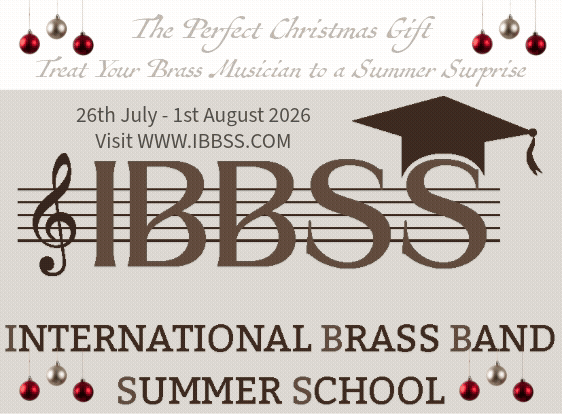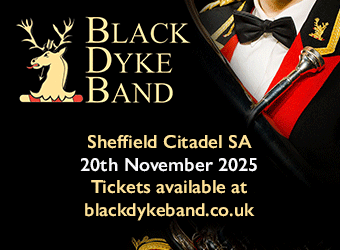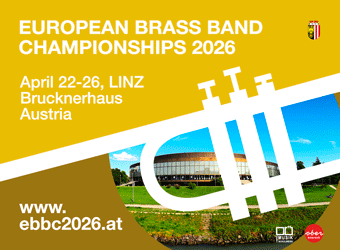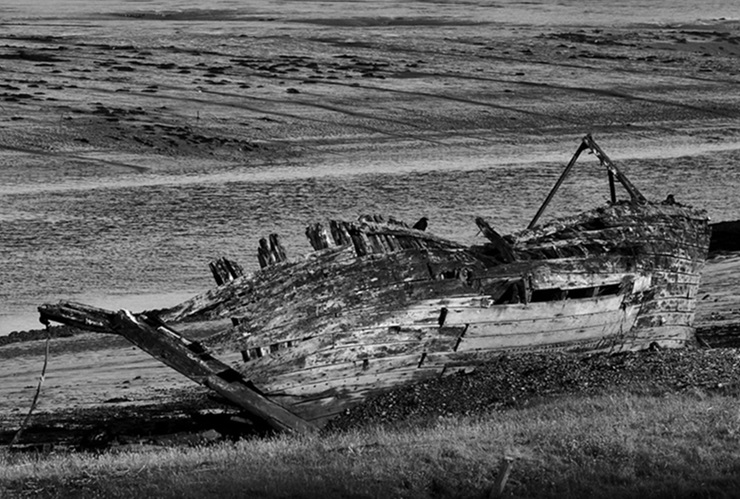
On the night of 22nd October 1707, ‘Association’, the flagship of the Royal Navy struck rocks off the Scilly Isles and sank below the waves. Within minutes 800 men including its captain were lost.
Soon after, HMS Eagle and HMS Romney suffered the same fate, whilst two other vessels of the 21-ship fleet foundered in the squall. At least 1647 souls perished. The corpse of the fleet commander Admiral Sir Cloudesley Shovell was later found several miles away on a local beach.
Such was the outcry at the loss that Queen Anne later commanded that his remains be exhumed, embalmed and re-buried at Westminster Abbey.
Despair and rumour
However, despair was soon supplemented by rumour; from accusations that the warnings of a deck hand were ignored, to a lurid tale of the Admiral being washed ashore alive only to be murdered and robbed of his gold ring by a local woman seeking valuable flotsam and jetsam.

Stark facts
The facts though were stark enough – especially that of the seemingly impossible navigational problem of solving the longitudinal (east or west) position of a ship at sea.
Over 50 naval ships and countless more merchant vessels had been lost since 1700. Being out in calculation by 1 minute of longitude was equal to nearly a mile.
Given that a crossing from the Bahamas to Portsmouth was 4,355 miles, the most minor discrepancy, as shown on the fateful night, was the difference between life and death.
Given that a crossing from the Bahamas to Portsmouth was 4,355 miles, the most minor discrepancy, as shown on the fateful night, was the difference between life and death.
Sea clocks
In 1714 the Longitude Act was enacted to fund a prize of £20,000 to anyone who could find the solution.
It was eventually conquered over a period of 40 years by clockmaker John Harrison (1693-1776) who invented a series of marine chronometers or ‘sea clocks’ – the last of which (below) finally provided mariners with the most precise way of measuring their longitudinal position.
The tale was retold (with some embellishments) by author Dava Sobel in her 1997 book ‘Longitude’.
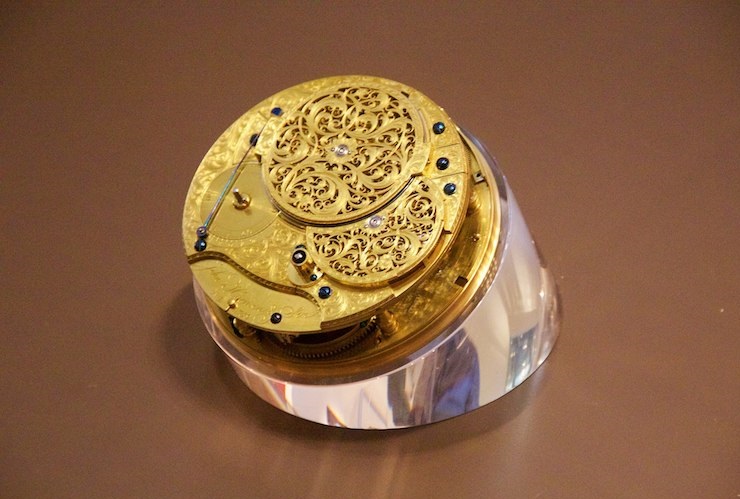
Moral imperative
Although it is noted in his foreword, Peter Graham does not seek to bring his own narrative tale to ‘Harrison’s Dream’, which was commissioned by Boosey & Hawkes for the Millenium National Finals of 2000.
Instead, it reflects very much on Harrison himself, and in particular his moral imperative not to be driven by the unprecedented financial reward in succeeding, but instead, to rid himself of the haunting thoughts of the countless lost souls that would further perish if he failed to do so.
Instead, it reflects very much on Harrison himself, and in particular his moral imperative not to be drivenby the unprecedented financial reward in succeeding, but instead, to rid himself of the haunting thoughts of the countless lost souls that would further perish if he failed to do so.
Deus ex machina
Interestingly, Harrison was not just a gifted clockmaker (although employed as a carpenter he was fascinated by the construction of timepiece mechanisms) but also a devout Christian and talented musician – becoming choirmaster for the Church of Holy Trinity in Barrow on Humber.
Peter Graham therefore proposes his own answer to Harrison’s ‘dream’ of ‘Deus ex machina’ (God from the Machine), combining scientific principles of construction to surround a core of spiritual belief.
Peter Graham therefore proposes his own answer to Harrison’s ‘dream’ of ‘Deus ex machina’ (God from the Machine), combining scientific principles of construction to surround a core of spiritual belief.
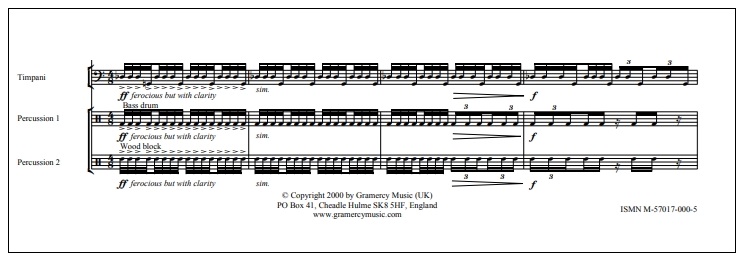
Rigour and craftsmanship
Central to this is his remarkable rigour (testament to his own problem-solving skill as well as musical craftsmanship) to encase that most humane sentiment within the most stringently precise of mechanical structures – that of the mathematical certainties of the 'Golden Section' of metrical modulation.
It is to be noted that the work is dedicated to Wilfred Heaton, a composer of inspiration to Graham, and a man who, like Harrison, also sought to bring a balance of understanding to his beliefs.
It is to be noted that the work is dedicated to Wilfred Heaton, a composer of inspiration to Graham, and a man who, like Harrison, also sought to bring a balance of understanding to his beliefs.
In theory the work should last exactly 12 minutes (720 seconds). Yet, by providing these borders it allows the gravitational pull of the composition to be drawn inexorably to its central point.
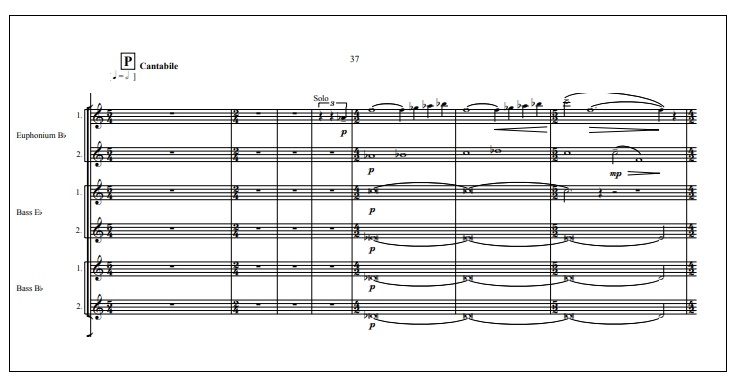
Clarity and drive
The mechanical opening (above) is ferocious in its clarity and drive – the cornets emerging from its imposing weight, the metronomic sound of a pendulum tick played on the wood block.
It is the music of scientific exploitation – precise and unyielding, only finally losing its wound momentum after a series of nightmarish scenarios played out in Harrison’s mind (including a grotesque waltz).
Spiritual core
Eventually the spiritual core emerges; the harmony based in fragmentary part from the famous Thomas Tallis 'Canon' (a work Harrison would surely have known as a choirmaster).
Eventually the spiritual core emerges; the harmony based in fragmentary part from the famous Thomas Tallis 'Canon' (a work Harrison would surely have known as a choirmaster).
There is also a more oblique connection in reference to Tallis’ burial place which just happens to be at the point of the longitude Prime Meridian in Greenwich, which now houses Harrison’s clocks.

Requiem
This is a requiem for lost souls - past, present and future, which haunt Harrison’s dreams of solving the problem.
Time is allowed to find a natural momentum of expression, although it is also one that treads a fine line for conductors between the emotional lyricism of serenity and tenderness and that of treacly self-indulgence.
Time is allowed to find a natural momentum of expression, although it is also one that treads a fine line for conductors between the emotional lyricism of serenity and tenderness and that of treacly self-indulgence.
The chilling nightmare of mariners sinking to the depths of the abyss is evoked by the sound of the ‘eight bells’ (signifying the length of a sailor’s four-hour watch and simply played on different non-pitched pieces of metal) that bring the section (above) to an end.

Resurgam
The return of the opening structures and stictures is once again marked by an alignment to ratio certainty, although now imbued with a sense of achievement and triumph (above) as the sounds of the requiem melody signal life affirming success: Harrison’s 40 year battle to solve the challenge finally conquered.
The final euphonium moments reference Eric Ball’s ‘Resurgam’ – that the souls of the righteous will rise again.
Iwan Fox



